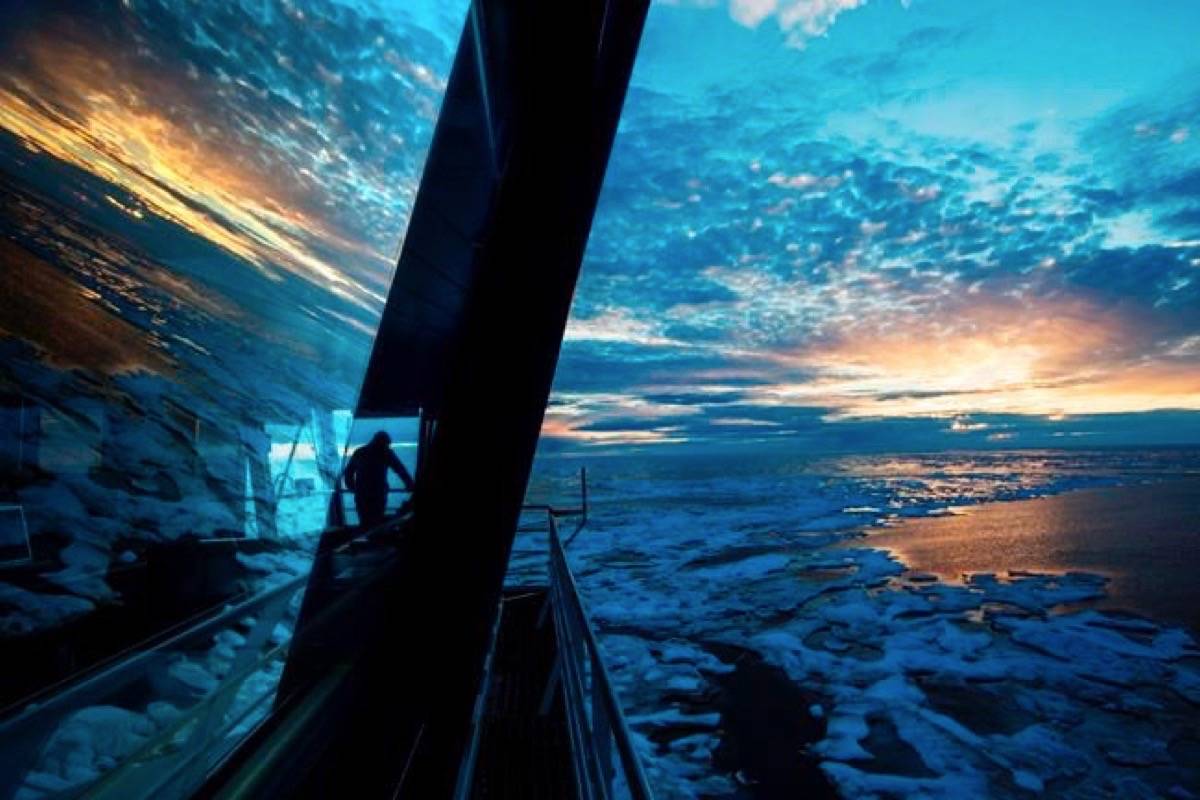A traditional hunter in the Northwest Territories says he used to welcome the cruise ships coming into the Beaufort Sea in Canada’s Arctic.
But Hans Lennie from Inuvik says that’s changing.
“Not as much now. Now that we’ve got all the facts,” said Lennie, who also sits on the Inuvialuit Game Council, which manages wildlife and wildlife habitat in the region.
Some of his concerns are highlighted in a new report about untreated grey water being dumped by ships passing through.
The study commissioned by World Wildlife Fund Canada said the amount of grey water — drainage from sinks, laundry machines, bath tubs, shower stalls or dishwashers — could double by 2035 if laws aren’t improved.
READ MORE: Hundreds of Arctic glaciers shrinking, disappearing
READ MORE: Arctic ice melt, increased shipping endangers whales: study
“It’s pretty alarming,” said Melissa Nacke of the wildlife conservation group. “These concentration areas are overlapping with important species habitat and important cultural areas.”
The number of ships travelling in northern waters is expected to increase as climate change melts sea ice. The study suggests tourism will be the biggest source of grey water dumping by 2035.
“If you think of shower or laundry water, it contains detergent and soaps and shampoos,” said Nacke. “It also has really high levels of nutrients … and can have things like oil and grease. It can have metals, food particles and, because of the laundry, it can also have microplastics.”
Nacke said those materials can contaminate shellfish and cause large algae blooms that create dead zones in the ocean.
The report noted that could have repercussions for food security in northern communities — a conclusion that only adds to Lennie’s concerns.
“It’s totally detrimental,” said Lennie. “These ships, their grey water is all their cleaning material. That’s pretty toxic stuff.
“It’s a nurturing grounds. All the marine life. All the invertebrates that the whales feed on. It involves the waterfowl too. It definitely has an impact on the food chain.”
Both the report and locals like Lennie say federal and international regulations are necessary.
“We need something. Right now we have nothing,” he said. “Anything we do is better than nothing.”
Lennie said the Inuvialuit Game Council has been meeting with the federal government.
READ MORE: B.C. skipper who circumnavigated North America publishes book on Canada’s Arctic
READ MORE: ‘We’re quite frustrated:’ Red tape threatens growing Arctic space industry
Officials with Transport Canada said they are reviewing the report.
“Canada regulates shipping within Canadian Arctic waters,” said an emailed statement from the department. ”The regulations address many aspects of Arctic shipping, including requirements for vessel construction and operation, training of crew members, the presence of ice navigators on board, fire safety and life-saving.”
But the statement acknowledged there are no provisions related to grey water.
Different rules are in place for southern Canadian waters. The regulations require passenger vessels built after 2013 and carrying more than 500 passengers to use an onboard marine sanitation device before releasing grey water.
The U.S. government and the state of Alaska have regulations related to grey water from ships.
“Part of that was because cruise ships spend a lot of time in Alaska,” said Ed White, cruise ship program manager with Alaska’s Department of Environmental Conservation. “Part of it was the size of the ships, too, which were much larger than the communities they were travelling to. That created a lot public concern.”
White said the major worry was linked to bacteria from food waste or laundry, but officials had also found toxic materials such as dry cleaning chemicals and mercury.
“We don’t see that anymore.”
That’s due to stricter regulations, he said, including inspections on ships and a move to stop using some toxic materials.
Nacke said high standards in Alaska make it more important for grey water discharge to be regulated in Canada’s northern waters.
“Cruise ships that go around Alaska … can literally use Canada as a dumping ground,” she said.
Lennie said he hopes there are some regulations sooner rather than later.
“This is a new travel destination,” he said. “(Tourists) want to see the untouched wilderness, but there’s a cost to it.”
— By Colette Derworiz in Edmonton.
The Canadian Press



